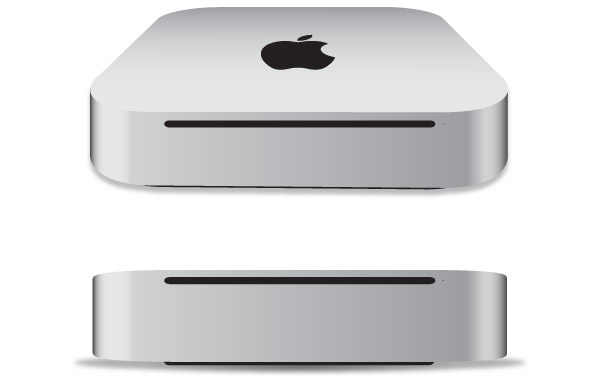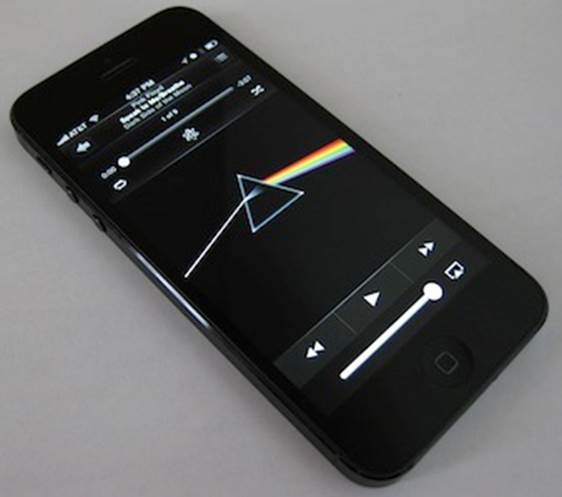Apple’s designers can make tremendously
repairable products. They just need to decide that they care’.
While users wonder how Apple’s newly
unified hardware and software strategies might affect the look of its apps, at
least one tech expert believes the company needs to urgently apply its design
expertise to an already familiar challenge: making it easier to upgrade and
recycle some of its products.

Mac
mini
While the Mac mini and, unexpectedly, even
the iPhone 5 have won kudos for repairability from repair website iFixit, it
rates the iPads and the new MacBook Pros with Retina display among the
industry’s least repairable devices. Is this a sign that Apple, which
frequently brags about its green credentials, is putting aesthetics too far
ahead of environmental concerns when creating new products?
Apple cites several major green ‘kite marks’,
such as Energy Star. But questions about the ease with which its devices can
actually be repaired, upgraded or recycled came to the forefront last July,
when Apple left EPEAT, an environmental registry focused on recycling.
At the time, EPEAT wasn’t particularly well
known, and was mainly used by organisations - including the US government - to
aid procurement, rather than as buying advice for consumers. But when Apple
stepped away without explanation, EPEAT made headlines. The green registry’s
own CEO, Robert Frisbee, suggested Apple was concerned its new 15in Retina
MacBook Pro wouldn’t get a passing grade, despite all of its previous products
having gained top marks.

At
the time, EPEAT wasn’t particularly well known, and was mainly used by organisations
- including the US government - to aid procurement, rather than as buying
advice for consumers. But when Apple stepped away without explanation, EPEAT
made headlines
After predictable outrage from campaigners
and threats from some in government procurement - including the City of San
Francisco - that they wouldn’t buy Apple’s products any more, Apple issued an
apology and rejoined. EPEAT then verified the grades of all the ‘unibody
ultrathins’ on its list, including the Retina MacBook Pro, finding all of them
met its standards and all, including Apple’s new laptop, could be certified.
This seemed surprising, given that iFixit founder Kyle Wiens rated the Retina MacBook Pro
‘the least repairable, least recyclable computer I have encountered in more
than a decade of disassembling electronics’.
There were two reasons for the EPEAT
result. Generally, the standard is old and limited, so it doesn’t address many
of the challenges facing manufacturers today; fortunately, it’s about to be
renewed. Specifically, the key complaint about the Retina device, namely that
it can’t easily be dismantled because of how the battery is glued in, was found
not to be an issue. E PEAT said it could remove the battery safely in minutes -
a claim iFixit disputes, with Wiens calling EPEAT’s findings a ‘clear case of
greenwashing.’
This wasn’t a case of anti-Apple bias:
iFixit has given the last few iPhones solid marks for repairability, and the
Mac mini is particular favourite of the site, which covers Apple products regularly.
But there’s one major difference with low-scoring devices such as the new iPad
and iPad mini and the Retina MacBooks: the use of glue versus screws.
In the iPads and Retina MacBooks, Apple
uses adhesive to fix the batteries and other components in place - presumably
to help keep cases thin, as the slimmed-down Retina model is the first MacBook
Pro to get this treatment. ‘It’s easier to make products if you glue them
together, but harder to repair them,’ Wiens explains simply.
Regarding the 15in Retina MacBook Pro
released earlier this year, iFixit found: ‘The battery is no longer screwed
in... Apple chose to use the dreaded g-word: glue.’ The overall score of one
out of ten wasn’t helped by the soldered-inlogicboard, proprietary SSD and
fused display. The new13in Retina MacBook doesn’t fare much better, scoring two
points.
The battery is still glued in, but Apple
has done this in such a way that it’s easier to remove than before.
(Intriguingly, the 13in case is actually slightly thicker instead of thinner
than its wider sibling.)
‘The RAM is surface-mount soldered to the
logic board, so no upgrade is possible. It will forever have 8GB of RAM,’
iFixit added. ‘The display assembly is almost impossible to take apart. If
anything ever fails inside the display, you’ll need to replace the display as
a whole.’ This is also the case with some iOS devices, but the MacBook’s much
larger Retina display is a more significant component to recycle and replace.

Mac
mini: not glued up like a macaroni collage
The latest iPads have the same sticky problem.
‘Continuing the trend, this [fourth-generation] iPad is glued shut,’ iFixit
noted. ‘This isn’t our first adhesive-riddled iPad, and we’ve been working to
figure out how to make the painful opening process a lot easier.’ Part of that
involves a new heating tool created by iFixit called an iOpener, as well as
strategic guitar picks. ‘Like the iPad 3, the battery is adhered very securely
to the rear case. Since batteries wear out, the trend of glued-in,
hard-to-access batteries in iPads and other Apple devices is unfortunate.’
The new iPad scored two out of ten, with
iFixit saying some parts - including the LCD - were easy enough to remove, but
glue was again an issue. ‘Just like in the iPad 2 and 3, the front panel is glued
to the rest of the device, greatly increasing the chances of cracking the glass
when trying to remove it,’ the site found in its iPad 4 teardown. “Gobs, gobs,
and gobs of adhesive hold everything in place, including the
prone-to-start-a-fire-if-punctured battery.’ This in particular would present a
challenge to repairers and recyclers. ‘The LCD has foam sticky tape adhering it
to the front panel, increasing chances of it being shattered during
disassembly.’
The iPad mini scored no better, also
earning two out of ten, thanks in part to its ‘copious amounts’ of glue.
None of that is
good news for owners eyeing the future prospect of needing a repair or a
replacement battery. Apple says on its website that its batteries, for example,
simply don’t need to be removed and replaced, claiming they last for 1,000
charges, compared to 300 for other notebook batteries. ‘And because this
battery lasts up to five years, MacBook Pro uses just one battery in about the
same time a typical notebook uses three. That saves you money, produces less
waste, and increases the lifespan of your MacBook Pro,’ Apple claims on its
website. Five years doesn’t seem an enormous lifespan, though, especially
considering that serious users may work the battery harder than anticipated.
While laptops may feel like devices that
should be upgradable, that’s arguably not what most people expect of an iPad.
But it’s still a key issue for the environment. According to Francesca
Broadbent at recycling charity Computer Aid, re-using IT equipment is 25 times
more energy efficient than recycling. ‘Over 4,000 times more material is used
to make a laptop than it actually ends up weighing,’ she points out.
Batteries that fail when a device is just
old enough to not seem worth spending any more money on seem like a very
efficient way to build in obsolescence. Not only are users more likely to
dispose of them than pay to revive them, but when they do, issues like
hard-to-remove batteries are problematic again for recycling. The trickier and
more potentially dangerous it is to take apart a device, the harder it is to
recycle it safely.
Apple takes on this problem itself, accepting
all of its products back from customers for recycling, as all tech firms
selling in the EU are required to do. But that doesn’t make the difficulties go
away.
Apple simply doesn’t need to use so much
glue. The iPhone 5, despite being one of the most space-efficient products the
company has produced, uses screws instead, scoring seven out of ten overall.
While iFixit does complain about Apple’s use of proprietary pentalobe screws
(requiring special tools), and taking apart an iPhone still isn’t a casual job
like dismantling a desktop PC, the internals are very accessible if required.

The
iPhone 5, despite being one of the most space-efficient products the company
has produced, uses screws instead, scoring seven out of ten overall.
The same goes for the Mac mini. Though tiny
for a full-blown computer, it doesn’t have a drop of adhesive anywhere, and CPU
aside it’s quite easily upgradable. iFixit awarded the latest model eight out
of ten, calling it ‘one of the most repairable devices that Apple produces’.
In other words, Apple can make
easily upgradable, repairable and recyclable devices - but much of the time it
simply doesn’t. Wiens believes this has to do with the company’s attitude.
‘Design for disassembly/ repair is something you have to factor in at the
beginning of the design process. If it’s not part of management’s priorities,
it’s not going to happen,’ he adds. ‘Apple has the best designers in the world,
and they have made some tremendously repairable products. They just have to
decide that they care.’